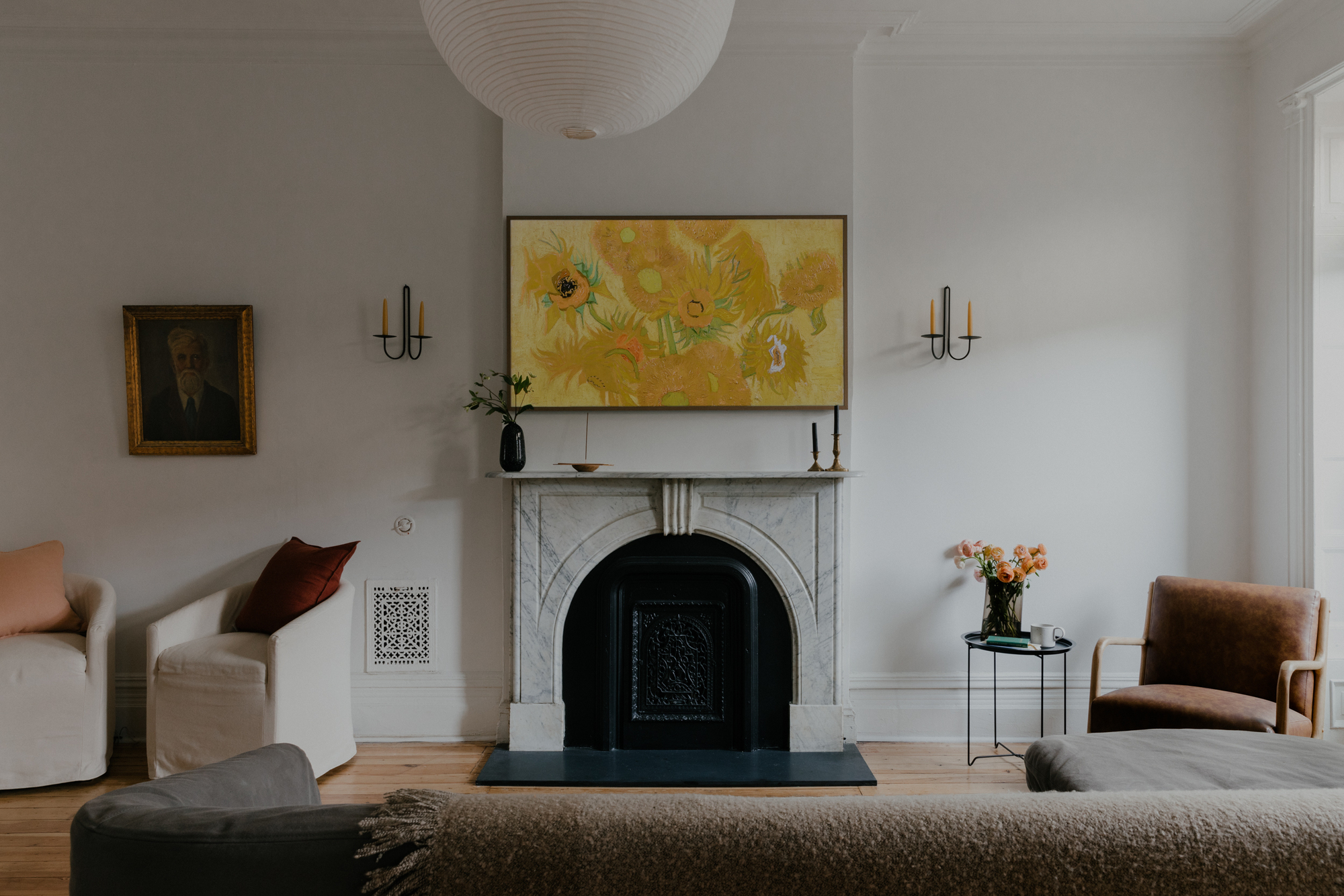Is my TV too high on the wall? The golden rule to use for a more comfortable watching position
This is how you should figure out the ideal wall-mounting height.


Is your TV mounted too high on the wall? Given it’s entirely subjective, the answer is ‘no’, as long as you’re happy with it.
But not everyone shares this view. Indeed, there’s a whole subreddit dedicated to roasting setups where the TV is mounted too high on the wall. And yes, if your television is like some of the more eye-catching examples, then it probably is high enough that local chiropractors are already clearing their calendars ahead of your inevitable neck-strain-related visit.
So how high should your TV be on the wall? Here’s what most people seem to think is the most sensible answer.
How high should my TV be on the wall?
The consensus is that the center of your TV should be at eye level, ensuring you don’t have to flick your neck up or down to see the majority of the on-screen action.
Of course, that in itself brings up a whole host of factors, including the size of the TV, the dimensions of your couch, and the viewer’s height — itself made more complex if the TV is going to be used by multiple children and adults of varying proportions.
There are a few ways of addressing this problem. If you have help at hand, sit in your favored position and get a friend or family member to measure the distance from the floor to eye level. Better still, enlist two strong friends to physically move the TV in front of you in your seated position until you find the sweet spot that feels right for you.
If this is a solo mission, you could use this online calculator. It factors in everything from TV size to tilt and watching height to spit out the ideal number.
The Livingetc newsletters are your inside source for what’s shaping interiors now - and what’s next. Discover trend forecasts, smart style ideas, and curated shopping inspiration that brings design to life. Subscribe today and stay ahead of the curve.
Does all of this sound like a bit too much effort? Completely understandable, and Samsung has a recommended average that’ll work for most people: position the center of the TV 42 inches from the floor.
“This should meet the approximate eye level of someone who is 5 feet 6 inches tall and sitting on a standard couch,” the company explains. “Of course, you can mount it a little lower if needed, based on the viewers' height.”
Don’t stress too much about this — an inch either way isn’t going to hurt. And if you’re catering to a family of varying heights, you’re just going to have to aim for something that’s merely ‘okay’ for everyone.
Some clear exceptions
It’s important to understand that these ‘rules’ are a starting point rather than the inflexible, absolute answer. It all depends on your circumstances and whether comfortable viewing is the priority.
What do we mean with that? Well, if you have young children or enthusiastic pets, you already know one exception: sometimes having a TV that’s out of reach trumps the ideal aesthetic viewing angle. If you need to wall mount your TV that bit higher to prevent accidents, then that’s a reasonable trade off to make.
Likewise, it’s important to remember that not all spaces are created equal. If you’re installing your TV in a home bar, you may have decked out the place with barstools which are significantly taller than your average sofa.
Likewise, if your TV is background entertainment for a games room, then you’ll want the screen higher if you’re going to spend the majority of your viewing time standing around a pool table while you wait for your shot.
Is my TV too high on the wall?
As we wrote at the start, the question is a subjective one. Some people prefer their TV to be a bit higher than others, and that’s fine as long as it’s not so high that you’re straining your neck to see the action.
In short, eye-level or just above appears to be the sweet spot. If you’re in that range, it’s probably not worth the hassle of unmounting and remounting, but if you have to raise your head to see everything, then it’s likely time for a change.

Freelance contributor Alan has been writing about tech for over a decade, covering phones, drones and everything in between. Previously Deputy Editor of tech site Alphr, his words are found all over the web and in the occasional magazine too. He often writes for T3 and Tom's Guide. When not weighing up the pros and cons of the latest smartwatch, you'll probably find him tackling his ever-growing games backlog. Or, more likely, playing Spelunky for the millionth time.